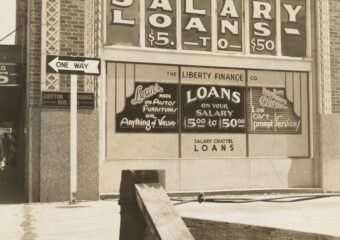If I had to single out one phenomenon that has caused the most debate and fear among economists worldwide this year, it would no longer be pandemics or unemployment but inflation. What factors are behind the accelerating price increases, how long can they last, and are the fears of hyperinflation justified?
The rising cost of industrial and food raw materials, the prices of copper and other non-ferrous metals, which are breaking new records, the increasing cost of transport, and the shortage of semiconductors are not only economists who have heard about it these inflationary factors. Each of them is individually interesting and worthy of attention. Still, the concentration of all of them simultaneously creates a long-standing inflationary environment that is unprecedented and unfavorable to consumers.
In this article, it is normal that producer prices in China, still the world’s most crucial factory, were as much as 9% higher in May than a year earlier. If these trends continue, we will soon see the fastest rise in Chinese producer prices in a quarter of a century.
The spikes in raw material and producer prices are starting to trickle down into consumers’ pockets. In the US, consumer price growth accelerated to 5% in May, the highest since 2008 and “slightly” above the US Federal Reserve’s 2% target. Even after removing the impact of highly volatile energy and food prices, which are less dependent on central banks, price growth in the US is still close to 4%.
On this side of the Atlantic, the situation looks less heated, with euro area inflation accelerating to 2 percent, but this was mainly due to oil prices. At the same time, the appreciation of many goods and services remained more modest. As a result, the European Central Bank did not blink last week and extended the era of negative interest rates and record money supply expansion.
The pandemic has indeed subsided in many European countries. In a few weeks, many countries will be able to rejoice that they have vaccinated many of their citizens and willfully unleash their service sectors. In the least affected by the pandemic, economies are already increasing and have surpassed their pre-pandemic levels, but inflation is rising as employment and wages rise.
The rise in prices for recreation, culture, catering, accommodation, and other leisure services has so far been modest, but more rapid price increases are likely as the pandemic ends. This will be influenced by local rather than global trends – average wages, which rose by a tenth last year, have shown a similar increase in the first quarter of this year and seem unlikely to slow down.
The problem of labor shortages and the almost tenfold increase in the minimum monthly wage in six months also signal a continued rise in labor costs. So, for the time being, annual inflation of 3-4% is a minor problem because for many, wages and pensions rising by a tenth of a percentage point ensures a relatively rapid increase in purchasing power.
Could inflation accelerate further? Despite massive fiscal and monetary stimulus, the likelihood of such a scenario remains very low. Many people, observing the pace of money supply expansion, fear not only double-digit inflation but even hyperinflation and try to hedge against it with very exotic and hazardous instruments (sometimes called shitcoins). But they do so unnecessarily.
What should be most worrying in this situation is not the rise in the price of raw materials, the cost of shipping containers or other price spikes associated with the post-pandemic supply chain disruption – these factors are indeed likely to be temporary. However, it is difficult to ignore that double-digit inflation can be observed in many parts of the world in property markets, where prices are breaking new, often unsustainable, records.
For example, in the US market (at least in some segments), the speculative demand, market imbalances, and even the absurdity of the situation are illustrated by numerous anecdotal examples of several buyers competing fiercely, not by haggling by offering ever-higher prices for their desired property. Last month, one such auction was notorious when the buyer offered a higher price and provided a written promise to name the firstborn after the seller. Unfortunately, this was not enough, and she lost the auction.
In the meantime, the central banks are unanimously repeating that this inflation is temporary, that it should subside in six months, and that they are continuing to press the accelerator of the printers to the bottom. It is a good thing that if you complain of chronic pain at the doctor’s surgery, the doctors do not kick you out of the door, suggesting that you wait six months hoping that the pain will gone.




